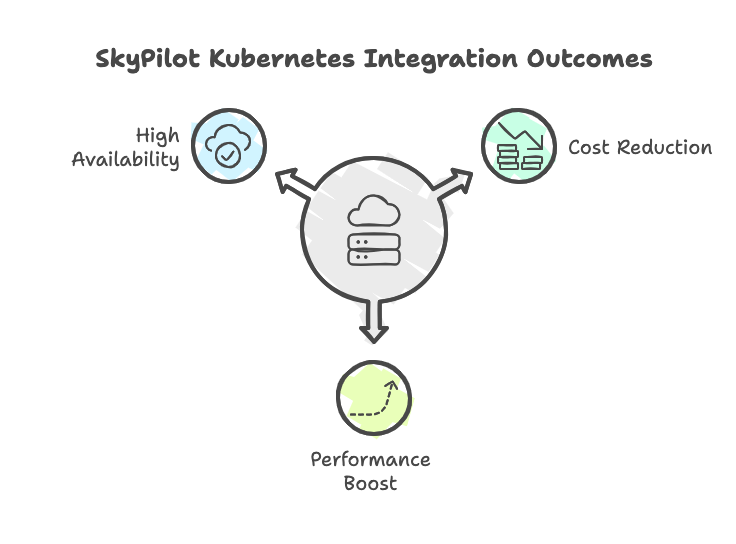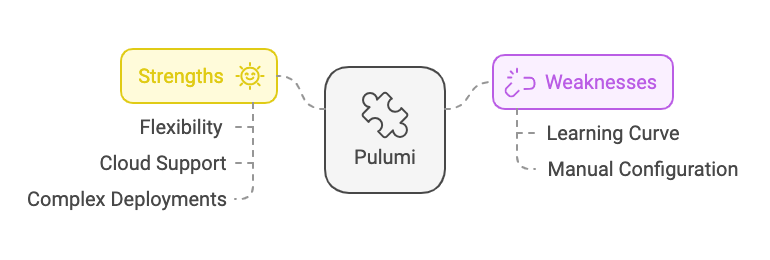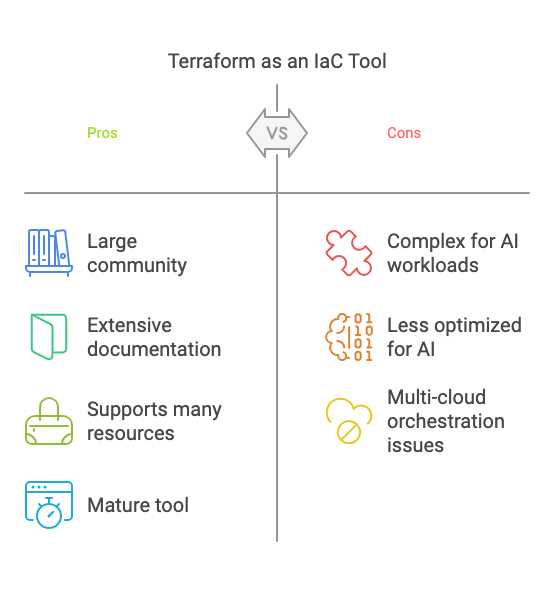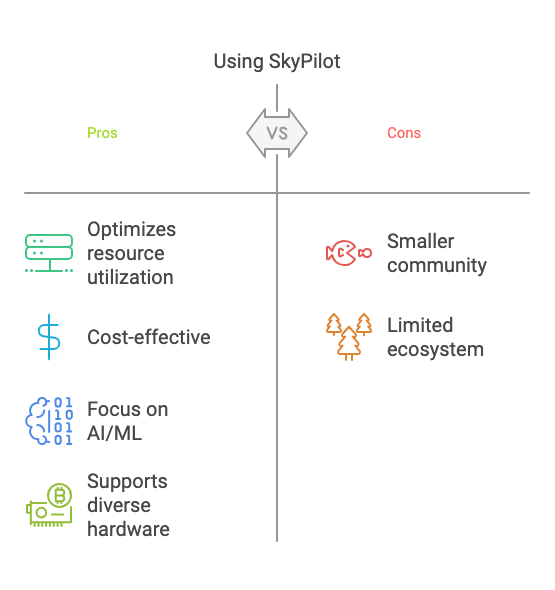As businesses increasingly rely on AI and machine learning to drive innovation, managing the cloud infrastructure supporting these workloads becomes paramount. Optimizing AI workloads in the cloud is essential for ensuring flexibility, scalability, and cost-efficiency. Cloud computing offers immense benefits, but it can also become costly if not properly managed. For IT managers, senior developers, and DevOps teams, the challenge lies in efficiently managing cloud resources while reducing costs and ensuring the smooth execution of AI jobs. This is where SkyPilot comes in—a powerful tool designed to bridge the gap between cloud flexibility and the unique demands of AI workloads. In this article, we will explore how SkyPilot can help IT teams optimize infrastructure, manage workloads across multiple clouds, and cut costs effectively, and we will also compare it to other popular tools like Pulumi, Terraform, and Cloudfleet.
Background: The Growing Challenge of AI Infrastructure
Running AI workloads involves large datasets, high computational demands, and often unpredictable resource requirements. Whether using TensorFlow, PyTorch, or custom machine learning pipelines, managing cloud resources for these workloads requires a deep understanding of both the technology stack and the cloud platforms in use. Scaling and managing these resources manually is time-consuming and prone to errors.
In addition to scaling, cloud costs can escalate quickly if not monitored and optimized. Spot instances, for example, can reduce costs but come with the risk of termination, adding complexity to resource management. This is where tools like SkyPilot, which abstracts away much of the complexity, offer significant advantages.
Core Insights: How SkyPilot Streamlines Cloud Management
1. Simplified Multi-Cloud Management
SkyPilot excels in multi-cloud orchestration, allowing developers to run workloads seamlessly across multiple cloud providers (AWS, Google Cloud, Azure, etc.). By using a unified interface, SkyPilot enables the execution of AI workloads on different clouds, taking advantage of each platform’s unique pricing and performance characteristics.
For example, while AWS may be optimal for machine learning training, Google Cloud might offer better prices for data storage. SkyPilot can intelligently choose the right cloud resources for each job, without requiring manual intervention from DevOps teams.
2. Cost Optimization with Spot Instances
AI workloads often require massive computational power, and as a result, cloud costs can be a significant bottleneck. SkyPilot helps reduce this issue by leveraging spot instances, which offer unused capacity at a fraction of the cost. While these instances are subject to termination by cloud providers, SkyPilot handles the interruptions seamlessly, ensuring that the workflow continues without disruption.
Use Case: Consider a scenario where a team is training a deep learning model for natural language processing. By leveraging spot instances, they can drastically reduce their cloud compute costs, making the training of large models more financially feasible.
IT managers and DevOps teams can configure SkyPilot to automatically scale workloads across different instance types and cloud providers, ensuring that the application is always running on the most cost-effective infrastructure.
3. Cloud Abstraction for Seamless Workflows
One of the standout features of SkyPilot is its cloud abstraction layer. With this abstraction, DevOps teams can create a seamless workflow without having to worry about the specifics of the underlying cloud infrastructure. This means that the same code and commands work consistently across different cloud environments, removing the complexity and reducing potential issues with cloud provider APIs or service limits.
For senior developers, this allows them to focus more on building and scaling AI applications rather than managing complex cloud-specific configurations.
Use Case: An AI startup may use SkyPilot to deploy an NLP pipeline across AWS, Azure, and Google Cloud, all while maintaining a uniform codebase. This ensures that the team doesn’t need to worry about cloud-specific deployment quirks, allowing for faster time-to-market.
4. Kubernetes Integration
SkyPilot’s integration with Kubernetes allows teams to manage containerized applications at scale. This is particularly useful for AI workloads that rely on microservices or require orchestration across a large number of nodes. By managing Kubernetes clusters across multiple clouds, SkyPilot ensures that cloud resources are fully utilized, further reducing unnecessary costs and boosting performance.

Moreover, SkyPilot enables users to define deployment strategies, auto-scaling policies, and job priorities, making it an ideal tool for DevOps professionals who manage large-scale cloud-native AI applications.
Use Case: A company running an AI model as a containerized service can use SkyPilot to deploy this model on Kubernetes clusters across multiple cloud providers. This ensures high availability and optimized resource usage while minimizing costs.
Comparative Analysis: SkyPilot vs. Key Alternatives
While SkyPilot offers impressive cloud orchestration and cost optimization for AI workloads, it’s useful to compare it with other tools such as Pulumi, Terraform, and Cloudfleet, which also focus on cloud infrastructure management.
Pulumi
- Focus: Infrastructure as Code (IaC) with a focus on modern programming languages (Python, JavaScript, Go, etc.).
- Strengths:
- Highly flexible and customizable.
- Supports a wide range of cloud providers and services.
- Excellent for complex infrastructure deployments.
- Weaknesses:
- Steeper learning curve for those less familiar with programming.
- Requires more manual configuration for AI-specific optimizations like spot instance management.
Best Use Case: If you need maximum flexibility and the ability to deeply customize your infrastructure, especially for large, complex deployments, Pulumi is an excellent option.

Terraform
- Focus: Widely-used, open-source IaC tool.
- Strengths:
- Large community and extensive documentation.
- Supports a vast number of resources and providers.
- Mature and well-established tool.
- Weaknesses:
- Can be more complex for managing dynamic, AI-driven workloads.
- Less optimized for AI-specific features like seamless spot instance handling and multi-cloud orchestration.
Best Use Case: If you’re managing large-scale, multi-cloud infrastructure and need the maturity and stability of a widely adopted tool, Terraform may be the right choice.

Cloudfleet
- Focus: Specifically designed for running AI and batch workloads efficiently on any infrastructure (Kubernetes, 12+ clouds).
- Strengths:
- Excellent for optimizing resource utilization and cost-effectiveness.
- Strong focus on AI/ML workloads.
- Supports diverse hardware accelerators (GPUs, TPUs).
- Weaknesses:
- Smaller community and ecosystem compared to more general-purpose tools like Terraform.
Best Use Case: For teams focused purely on AI/ML workloads with an emphasis on optimizing computational resources, Cloudfleet is tailored for this purpose, offering specialized AI support.

Tools & Resources: Getting Started with SkyPilot
Getting Started with SkyPilot
To begin using SkyPilot, IT managers and DevOps teams need to:
- Install SkyPilot on their local machines or CI/CD pipelines.
- Set up cloud credentials for the various providers they wish to work with (AWS, Google Cloud, Azure, etc.).
- Create and define workload configurations, specifying the resources required for the job.
Key Documentation and Resources:
Best Practices: Maximizing Efficiency with SkyPilot
- Leverage Auto-Scaling
Set up auto-scaling policies to automatically adjust the number of instances based on workload demand. SkyPilot supports both vertical and horizontal scaling, allowing teams to optimize resource usage dynamically. - Monitor Cloud Costs Regularly
Integrate SkyPilot with your cloud billing systems to monitor usage and costs. Set up cost alerts to ensure that your cloud spend remains within budget. - Automate Spot Instance Management
Configure SkyPilot to automatically switch between on-demand and spot instances based on availability and cost. This flexibility ensures that your workload runs efficiently while minimizing the risk of job interruption. - Use SkyPilot’s Logging and Monitoring Tools
Utilize SkyPilot’s built-in logging and monitoring features to gain insights into your workloads. This will help identify bottlenecks, inefficiencies, or potential issues with cloud resource allocation.
Conclusion: Empowering IT Teams to Optimize AI Workloads
SkyPilot is a powerful solution for IT managers, senior developers, and DevOps professionals looking to optimize cloud infrastructure for AI workloads. By providing simplified multi-cloud management, cost optimization strategies, and seamless integration with Kubernetes, SkyPilot empowers teams to efficiently run and manage AI jobs without the overhead of manual cloud configurations.
As cloud resources continue to grow in importance for AI development, tools like SkyPilot will become increasingly vital for businesses to maximize performance while minimizing costs. For IT teams seeking to stay ahead of the curve, adopting SkyPilot is a step toward a more efficient, cost-effective, and scalable cloud infrastructure.
Explore More
- AI Services: Explore our AI services for more details.
- Digital Product Development: Discover our digital product development expertise.
- Design Innovation: Learn about our design innovation approach.





Leave a Reply